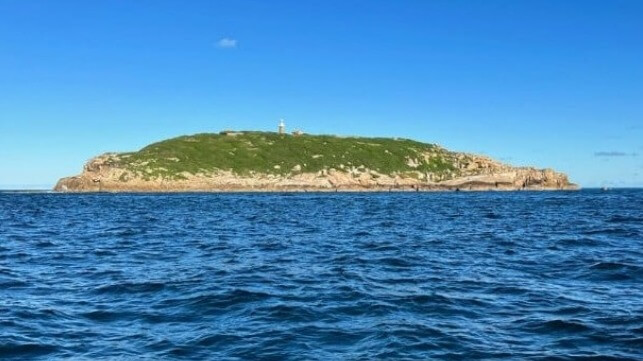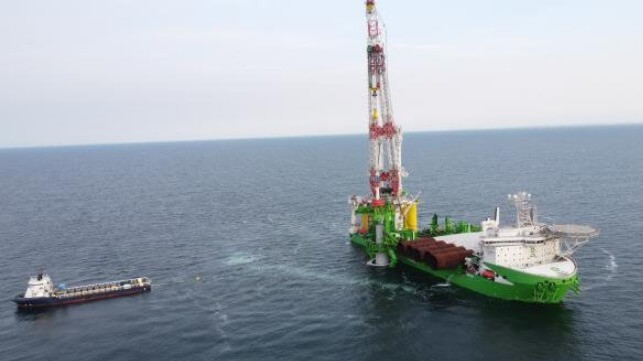Australia Issues First Feasibility Licenses for Offshore Wind Farms

Seeking to catch up with other parts of the developed world, Australia has issued the first of potentially a dozen feasibility licenses that could generate as much as 25 GW of electricity if all are completed. The awarding of the licenses came a year after Australia closed what it reports was a heavily oversubscribed first solicitation which included many of the best-known companies developing offshore wind assets.
Australia adopted a regulatory framework for offshore wind energy at the end of 2021 and designated its first wind zones along the southern coast in 2022 and a third location off the west coast in the Pacific in 2023. A series of projects have long been developing their plans and submitted proposals to the government.
The first solicitation focused on the state of Victoria and supplying power to an industrial region known as Gippsland. The application window was opened in January 2023 and by the time it closed in April 2023, 37 applications had been received for feasibility licenses. The goal had been 600 MW and they received applications for 19 GW.
“Australia’s first offshore wind zone has hit a new milestone,” said Minister of Climate Change and Energy Chris Bowen announcing the initial selections on May 1. “Granting feasibility licenses is the next step to helping deliver a new clean energy industry for Australia as well as future proof energy security and reliability for Victoria.”
Six potential projects have been granted or offered the licenses, including Star of the South Wind Farm which was the first proposed in Australia and which is backed by Copenhagen Infrastructure Partners. Also included is High Seas Wind proposed by EDP Renewables and ENGIE, Ørsted’s Gippsland 1, Blue Mackerel North proposed by Parkwind and Beach Energy, Gippsland Skies, and Kut-Wut Brataualung.
The licenses mean the developers can commence detailed assessments to determine feasibility. This will include environmental assessments, geotechnical surveys, and management plans. If feasibility is proven, the developers can then apply for a commercial license to build an offshore wind project to generate electricity commercially. It is projected that it could require seven years before the first projects would become operational.
The federal government plan is to award six additional licenses from this solicitation. Those would include projects from Iberdola, Ørsted, a second supported by CIP, and others. Additional consultations are required before these feasibility permits are issued, while a preliminary decision was also made that 25 other projects that submitted applications will not proceed at this time.
The state government in Victoria highlights that its goal is to have 2 GW by 2032, 4 GW by 2035, and 9 GW by 2040. The 25 GW proposed by the 12 selected projects would be used to replace coal-fired power but has the potential to cover the Gippsland region’s annual industrial power consumption 100 times over.
Bowen called the first application period a resounding success while also releasing further details on the government’s plans to achieve 32 GW of new renewable power. The government is also a strong supporter of battery projects and solar energy.
Two U.S. Offshore Wind Farms Gear Up for Construction Despite Challenges

Two of the largest U.S. offshore wind farms are moving forward into their construction phase as the industry continues to gain momentum and the federal government looks to add more projects to the pipeline. Dominion Energy confirmed that offshore work will begin next week on the Coastal Virginia Offshore Wind (CVOW) project while adamantly denying any reports that it has been delayed while in Connecticut the first components for the Revolution Wind project are arriving at the staging point.
“Consistent with the construction schedule, installation of monopiles by the DEME-operated vessel Orion is expected to commence between May 6 and May 8,” Dominion said in a statement issued yesterday. They called media reports and statements by a small group of critics that the project was delayed “false and grossly misrepresent the facts.”
On April 29, anti-wind groups filed a petition in the United States District Court for the District of Columbia seeking to delay CVOW construction. Dominion says the critics are “using the same meritless arguments as have already been rejected before by the courts, including last week by the U.S. Court of Appeals for the First Circuit in relation to an offshore wind project in Massachusetts.”
Dominion Energy strongly believes that the project's biological opinion is compliant with all legal requirements and expects to prevail against the request for a construction delay. The company received the last of its federal approvals in January 2024 for the wind farm which will consist of 176 turbines and three offshore substations off the coast of Virginia Beach. They began stockpiling components last fall in Virginia and when the wind farm is fully constructed in late 2026, it will have a 2.6 GW capacity, making it so far, the largest offshore wind farm in the United States.
Yesterday the local newspaper The Day in New London, Connecticut also spotted the arrival of the first components for Revolution Wind, a 704 MW project scheduled for development by Ørsted and Eversource (soon to be replaced by Global Infrastructure Partners which in February agreed to acquire Eversource’s investment).
The Bureau of Ocean Energy Management granted its final approvals late last year with the project reported that onshore work was already underway. The newspaper reported yesterday that sections of the monopoles for the turbines were the first pieces of the 65-turbine project set to be staged at the State Pier in New London. Ultimately, they will assemble the turbine components at the pier as well and ship them to the site similarly to what was done last year for the South Fork Wind project which completed its installation and became the first commercial-scale offshore wind farm in the United States. The Revolution project is expected to be operational in 2025 splitting its power between Connecticut and Rhode Island.
No comments:
Post a Comment